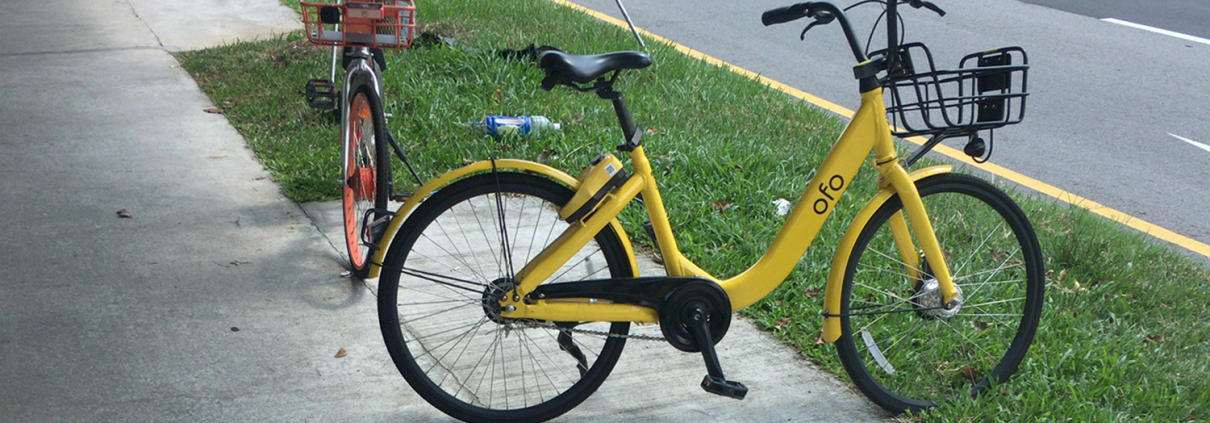On shared mobility services in Singapore
By Tomoko Kanda MURP ’19
“Shared mobility” is one of the most popular phrases in the urban planning and transportation field these days. For most of us living in California, using Uber, Lyft or e-scooters like Bird and Lime has become a daily transportation option. These new services (Uber’s official launch in San Francisco was just eight years ago!) are changing how we move around and challenging the existing street design and policy principle prioritizing personal vehicles. As a MURP student at UCLA from Tokyo, I have been wondering how such innovative mobility solutions developed in California can ease worsening congestion and improve quality of life in Asian megacities. With these questions in my mind, I flew to Singapore, the center of transportation innovation in Asia.
Along with Tokyo, Seoul and Hong Kong, Singapore is famous for its expansive public transit network. CNN ranked Singapore at third place in its 2017 article “Where are the world’s best metro systems?” Bus and MRT (light and heavy train) service is frequent and reliable, and the fares are affordable. For example, one trip by MRT from the north of the island to downtown, located on the south end, only costs 1.2 USD (25 km trip). On a small island with one of the world’s best transit systems, why are carpooling services and dockless shared bicycles attracting so many new users? Having spent two months in Singapore makes me wonder whether the low car ownership rate, dense and compact urban design, and intense demand for first-mile transportation options to and from MRT and bus stations are stimulating consumer needs for alternative transport options that can complement the existing public transportation.
During the summer, I am working at Ryde Technologies Pte., a Singaporean Transportation Network Company (TNC), as a business planning intern in the CEO office. Its mission is to make urban transportation more sustainable and efficient through shared mobility solutions, such as carpools and ride-hailing services. Founded in 2014, the company holds the second-largest market share in Singapore.
At work, my primary task is market evaluation and implementation of peer-to-peer delivery service, which matches delivery orders with privately hired drivers going in the same direction. Across Southeast Asia, e-commerce shopping has been growing at an incredible speed over the past few years, and it encourages demand for faster, cheaper and more reliable last-mile delivery service. As such, the company aims to transform the logistics industry by utilizing available spaces in vehicles and motorbikes through its sharing mobility platforms and also reduce CO2 emissions from land transport by optimizing traffic flows.
I am fascinated by the speed of new product development in a startup. The company needs only 1.5 months to design and develop this new delivery feature, which would not be possible in bigger established companies. As this story shows, innovative service comes into the market immediately after finding that there is an unmet need. In such a fast-changing atmosphere driven by private companies, what should public transit agencies and policymakers do to ensure equal and affordable access to transportation? This question is the most valuable takeaway from my working experience at TNC.










